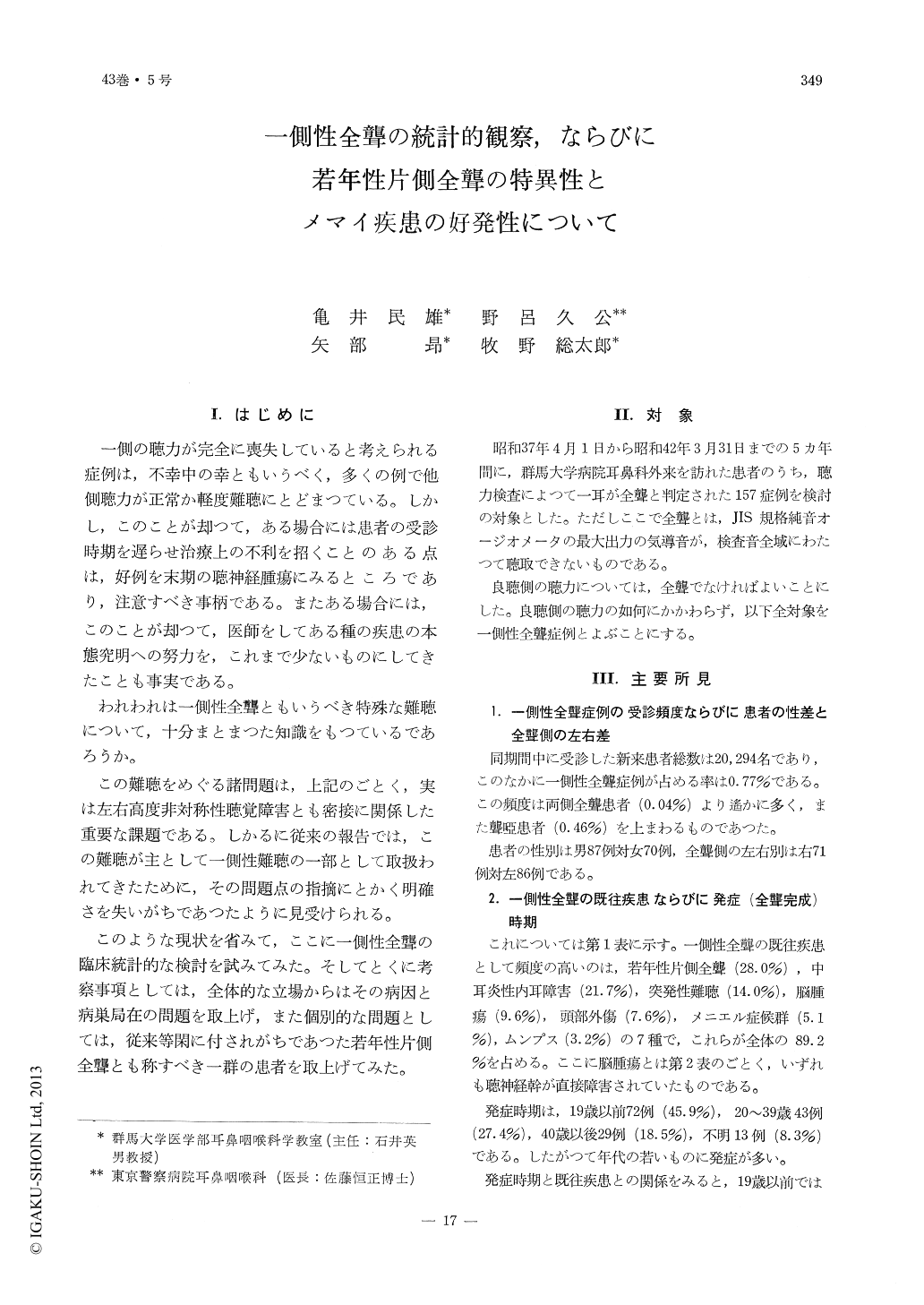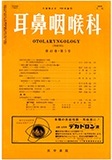Japanese
English
- 有料閲覧
- Abstract 文献概要
- 1ページ目 Look Inside
I.はじめに
一側の聴力が完全に喪失していると考えられる症例は,不幸中の幸ともいうべく,多くの例で他側聴力が正常か軽度難聴にとどまつている。しかし,このことが却つて,ある場合には患者の受診時期を遅らせ治療上の不利を招くことのある点は,好例を末期の聴神経腫瘍にみるところであり,注意すべき事柄である。またある場合には,このことが却つて,医師をしてある種の疾患の本態究明への努力を,これまで少ないものにしてきたことも事実である。
われわれは一側性全聾ともいうべき特殊な難聴について,十分まとまつた知識をもつているであろうか。
この難聴をめぐる諸問題は,上記のごとく,実は左右高度非対称性聴覚障害とも密接に関係した重要な課題である。しかるに従来の報告では,この難聴が主として一側性難聴の一部として取扱われてきたために,その問題点の指摘にとかく明確さを失いがちであつたように見受けられる。
このような現状を省みて,ここに一側性全聾の臨床統計的な検討を試みてみた。そしてとくに考察事項としては,全体的な立場からはその病因と病巣局在の問題を取上げ,また個別的な問題としては,従来等閑に付されがちであつた若年性片側全聾とも称すべき一群の患者を取上げてみた。
Statistical observation on 157 cases of unilateral total deafness are reported. Etiologically the unilateral total deafness may be classified into those of unilateral total deafness among children, inner ear involvement as the result of an acute otitis media, spontaneous loss of hearing, brain tumors particularly those involving the eighth nerve or the pontine angle, traumatic head injury, Ménière's syndrome and mumps. In 89.2% of cases the etiology appears to be based on such causes. The actual seat of lesion in this pathologic condition appears to be located in the cochlear mechanism. The unilateral total deafness that is found in children is discussed with special attention.

Copyright © 1971, Igaku-Shoin Ltd. All rights reserved.


